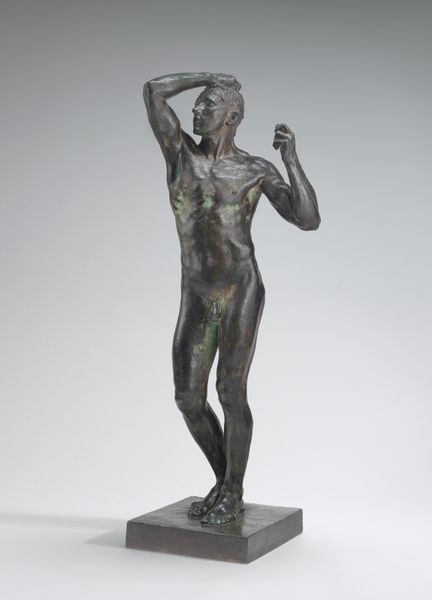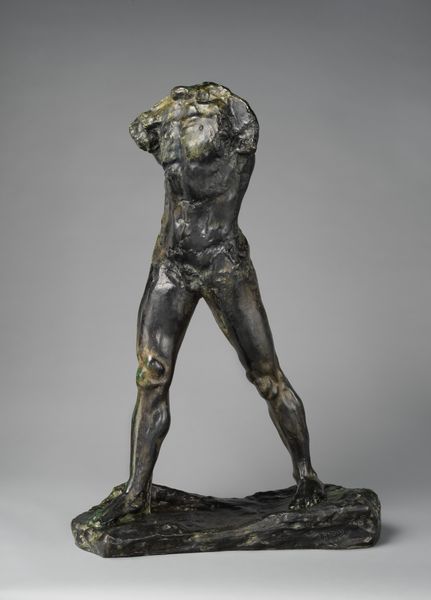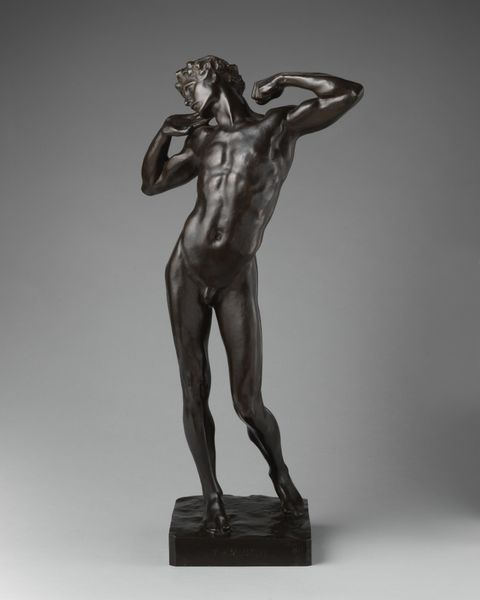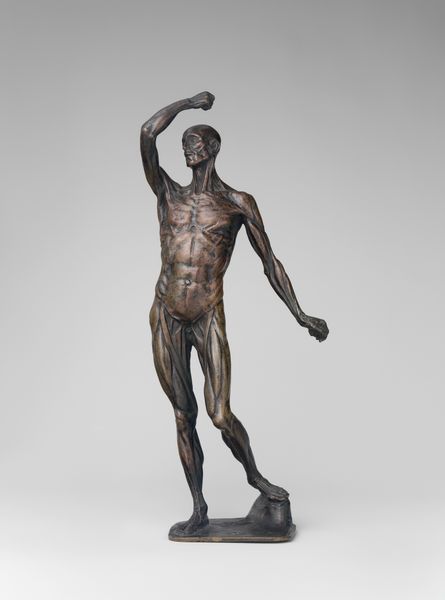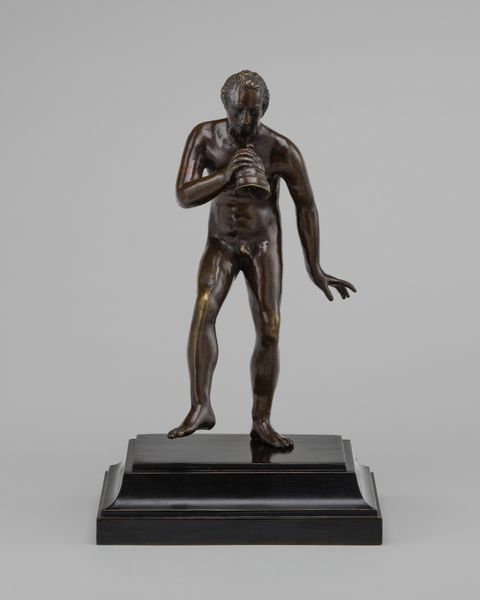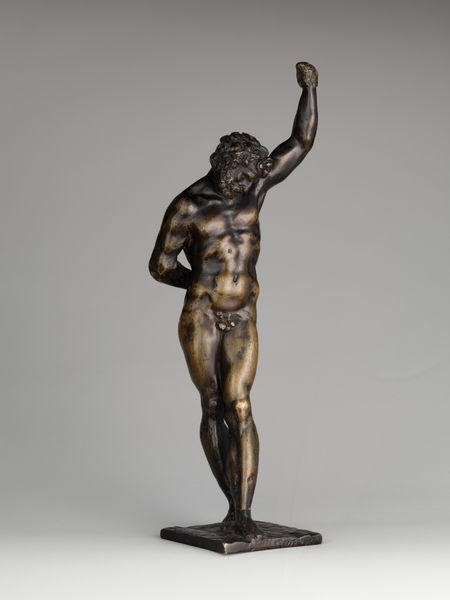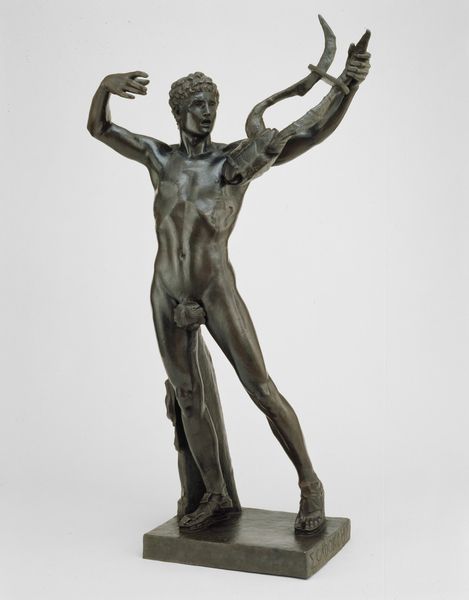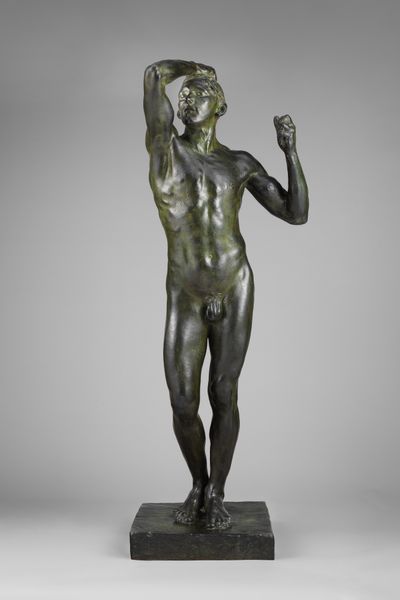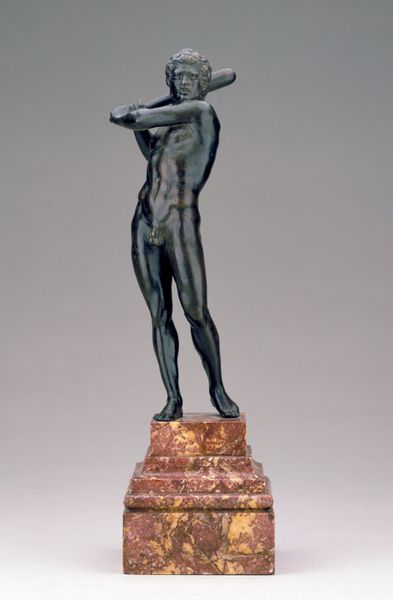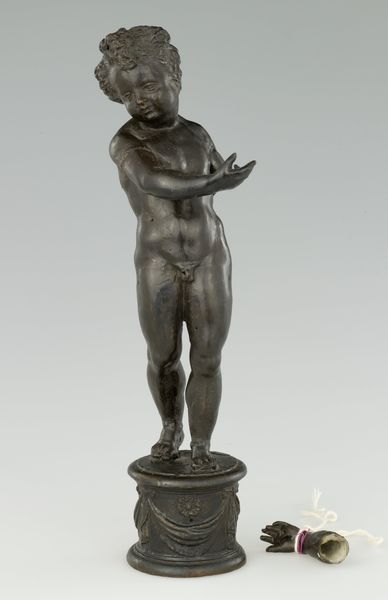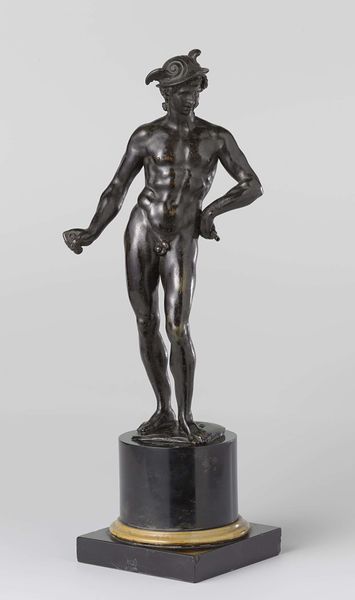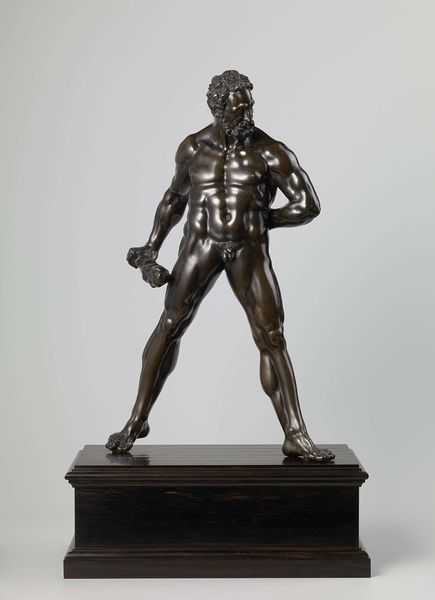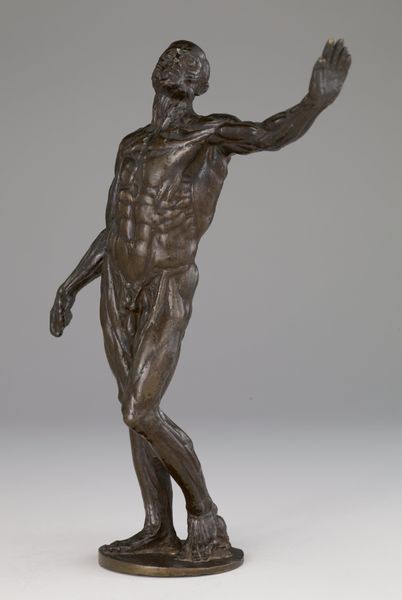
Dimensions: overall: 85.1 x 59.8 x 26.5 cm (33 1/2 x 23 9/16 x 10 7/16 in.)
Copyright: National Gallery of Art: CC0 1.0
Auguste Rodin created this bronze sculpture, The Walking Man, in France at the turn of the 20th century. It captures the body in motion, specifically the legs and torso of a male figure, though notably without a head or arms. Rodin's art challenged the conservative norms of academic sculpture during his time. While retaining classical references to the male nude, he broke with tradition by presenting a fragmented body, and rough, unfinished surfaces. This aesthetic decision reflected a shift towards realism and an interest in capturing fleeting moments, aligning with the rise of modernist thought. The figure's incompleteness invites reflection on the human condition. Is it about the power of movement? Or the fragility and incompleteness of existence? To understand Rodin's work, we can look at the cultural and institutional context that supported and, at times, resisted his vision. Understanding the academic conventions he challenged, and the emerging philosophies that shaped his approach, provides deeper insights into his artistic choices. Exploring the archives of art institutions and exhibition records can reveal the changing reception of Rodin's work and its impact on the development of modern sculpture.
Comments
No comments
Be the first to comment and join the conversation on the ultimate creative platform.
